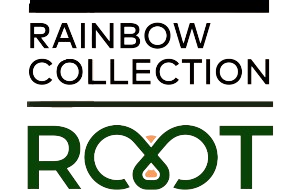Unlocking the power of scope 3: how the Root / Rainbow Collection partnership makes carbon measurement and reduction easier

Companies are searching for ways to measure and reduce their scope 3 carbon emissions. Tackling scope 3 emissions is essential to setting credible, science-based net-zero targets and future-proofing your net-zero journey. However, it is often seen as a complex, time-consuming and daunting task.
Here’s the good news – calculating and reducing your scope 3 emissions is becoming more manageable than ever, especially with the Root / Rainbow Collection partnership.
Ready to learn more about the importance of scope 3 and how the Root / Rainbow Collection partnership makes carbon measurement and reduction easier? Let’s dive in!
PUBLISHED: 4 October 2024
WRITTEN BY: Charlie Walter
Unlocking the power of scope 3: how the Root / Rainbow Collection partnership makes carbon measurement and reduction easier

Companies are searching for ways to measure and reduce their scope 3 carbon emissions. Tackling scope 3 emissions is essential to setting credible, science-based net-zero targets and future-proofing your net-zero journey. However, it is often seen as a complex, time-consuming and daunting task.
Here’s the good news – calculating and reducing your scope 3 emissions is becoming more manageable than ever, especially with the Root / Rainbow Collection partnership.
Ready to learn more about the importance of scope 3 and how the Root / Rainbow Collection partnership makes carbon measurement and reduction easier?
Let’s dive in!
PUBLISHED: 4 October 2024
WRITTEN BY: Charlie Walter
Why are scope 3 emissions so important?
Measuring and reducing scope 3 emissions is pivotal in any sustainability strategy. It empowers you to make informed decisions, safeguards you against greenwashing and ensures alignment with science-based targets.
But what are scope 3 emissions?
Below is a brief explanation of the different types of carbon emissions as defined by the Greenhouse Gas Protocol:
- Scope 1: Direct emissions from your company-owned facilities and vehicles.
- Scope 2: Indirect emissions from the energy you buy, e.g. electricity and heating.
- Scope 3: Indirect emissions across your value chain – from raw materials to product disposal.
Think of scope 1 and 2 emissions as the tip of the iceberg. The bulk of emissions – and the most significant opportunities for reduction – lie beneath the surface with scope 3 emissions.
Scope 3 emissions are often called the ‘holy grail’ of carbon emissions because they are the hardest to measure and reduce. However, with scope 3 emissions often accounting for up to 90% of a company’s carbon footprint, they also present the most significant opportunity to make a positive impact.
Sustainability teams urgently scope 3 data to drive product innovation, accelerate net zero journeys and respond to stakeholder requests for product footprints. Plus, regulations like CSRD increasingly require comprehensive data on a company’s climate impact.

Are you interested in learning more about scope 1, 2, and 3 emissions and why scope 3 is so important? Read our blog here.
Why are scope 3 emissions so important?
Measuring and reducing scope 3 emissions is pivotal in any sustainability strategy. It empowers you to make informed decisions, safeguards you against greenwashing and ensures alignment with science-based targets.
But what are scope 3 emissions?
Below is a brief explanation of the different types of carbon emissions as defined by the Greenhouse Gas Protocol:
- Scope 1: Direct emissions from your company-owned facilities and vehicles.
- Scope 2: Indirect emissions from the energy you buy, e.g. electricity and heating.
- Scope 3: Indirect emissions across your value chain – from raw materials to product disposal.
Think of scope 1 and 2 emissions as the tip of the iceberg. The bulk of emissions – and the most significant opportunities for reduction – lie beneath the surface with scope 3 emissions.
Scope 3 emissions are often called the ‘holy grail’ of carbon emissions because they are the hardest to measure and reduce. However, with scope 3 emissions often accounting for up to 90% of a company’s carbon footprint, they also present the most significant opportunity to make a positive impact.
Sustainability teams urgently scope 3 data to drive product innovation, accelerate net zero journeys and respond to stakeholder requests for product footprints. Plus, regulations like CSRD increasingly require comprehensive data on a company’s climate impact.
Are you interested in learning more about scope 1, 2, and 3 emissions and why scope 3 is so important? Read our blog here.

Automated carbon footprints for large product portfolios made easy
Conducting Life Cycle Assessments (LCAs) is a robust way to gather scope 3 data as they create product footprints. LCAs evaluate a product’s environmental impacts throughout its life cycle, from raw materials to disposal. Traditional LCAs are invaluable for companies but are typically inefficient, not scalable as they are only conducted on one product and are only accessible to LCA experts and academics.
That’s why Root was created. Our SaaS solution makes LCAs scaleable (creating thousands of LCAs at once), fast and accessible. Our software automatically maps out your value chain and converts your product data into actionable insights you can use to drive impact in your business.
Root enables you to easily access accurate company-wide and product-level carbon footprints for your entire product portfolio, including those all-important scope 3 emissions. If you are one of Rainbow Collection’s customers, you can use the platform with Root’s three-month pilot subscription (we dive into this later in the blog).
Building robust climate strategies with scope 3 data
Rainbow Collection, a sustainability agency, often works with companies that want to measure their carbon footprint or have already started doing so. However, they often face a common challenge – they can’t measure their scope 3 emissions.
Rainbow Collective believes that accurate scope 3 data is essential in creating effective climate strategies. This is seen with Rainbow Collection’s ‘Cut Your Carbon‘ approach, which uses carbon footprints, including the essential scope 3 data, to pinpoint hotspots and build impactful climate strategies.
The ‘Cut Your Carbon’ approach has three practical steps:
- Baseline (this is your carbon footprint)
- Hotspot matrix
- Strategy and roadmap
Rainbow Collection’s ‘Cut Your Carbon’ approach shows how sustainability agencies are crucial in helping companies use LCA data effectively to take climate action. They act as translators, turning carbon footprints into impactful climate strategies.

Root / Rainbow Collection partnership

Rainbow Collection needs carbon footprints to create robust climate strategies for its clients. Root can provide accurate company and product-level carbon footprints, so the Rainbow Collection / Root partnership was formed!
What does this partnership look like?
By teaming up, Root and Rainbow Collection simplify the complex process of measuring and reducing carbon emissions for Rainbow Collection’s clients.
Root handles the technical aspects, automating data collection and generating accurate company-wide and product-level carbon footprints, including scope 3 emissions. Rainbow Collection uses carbon footprints to build and implement robust climate strategies for its clients.
How does the partnership work – Root’s 3-month trial subscription
For Rainbow Collection customers, Root is offering a one-time exclusive offer to measure their carbon footprints, including scope 3 emissions.
Here are the details:
- Annual subscription
- 2 months free!
- Start date 1st November 2024
- Free onboarding
- Expert LCA support on hand
The offer is available until 1st November 2024, and only five spots are available.
If you are one of our customers, reach out to Root’s Cofounder Gijs here to learn more about the annual subscription.
The real magic of this partnership is combining robust scope 3 data with actionable insights so Rainbow Collection’s clients can take effective climate action without it consuming too much of their time.
Beyond creating a data-driven, impactful climate strategy Rainbow Collection’s clients will also benefit from:
- Setting realistic, data-driven, science-based targets.
- Using data to back up green claims and avoid greenwashing.
- Driving product innovation with product-level data.
- Collecting data for CSRD, the Green Claims Directive and other regulations.

Are you interested in learning more about this partnership? Watch our webinar recording where we discussed it in detail.
Ready to get started?
If you are a Rainbow Collection customer, get in touch with Root’s co-founder Gijs to learn more about Root’s annual subscription.
Or reach out to Lana from Rainbow Collection to learn more about Rainbow Collection’s “Cut Your Carbon” programme.
